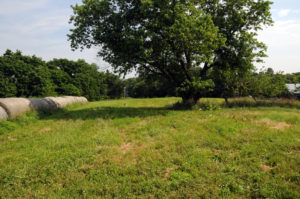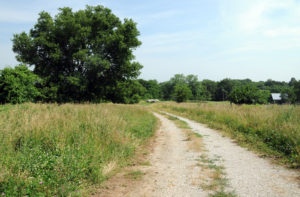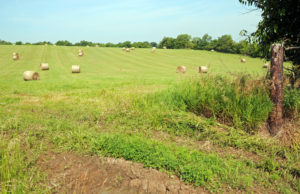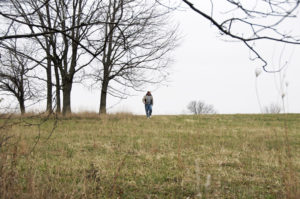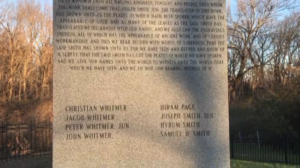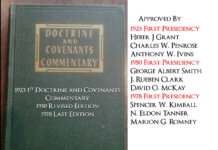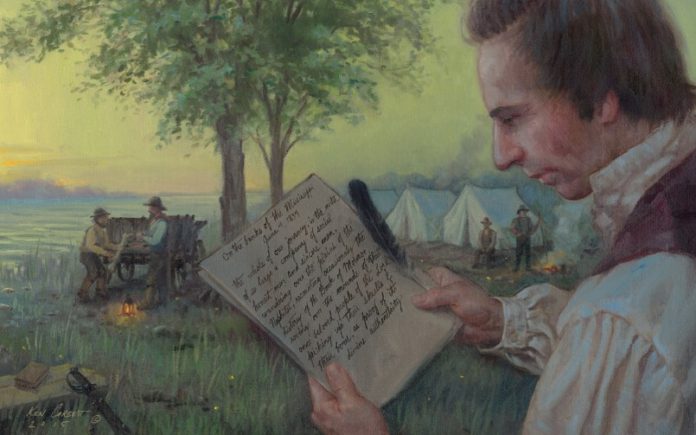
What’s the difference between your neighbor telling you the story he read about Zelph in the Joseph Smith Papers, in contrast to Joseph Smith telling you a story through the note taking of Wilford Woodruff and 7 other leaders of the Church, that today is in the approved Joseph Smith Papers documents? HUGE! It’s time to believe the prophet!
Wilford Wood Carried the Thigh Bone of Zelph
“I brought the thigh bone to Missouri. I desired to bury it in the Temple Block in Jackson County; but not having this privilege” History of the Life and Labors of Wilford Woodruff.
“Elder [Wilford] Woodruff carried the thigh bone to Clay county” Joseph Smith Papers History, 1838–1856, volume A-1 [23 December 1805–30 August 1834] page 483
Zelph is a True Story that Validates Geography
In my opinion Zelph lives and is a great man. His name is brought up in Church History for a sacred purpose. Joseph Smith says who he was in vision as the heavens were opened to him. We even know who his prophet leader was, Onondagus, who was known from the Rocky Mountains to the Hill Cumorah. It’s interesting that is the very land coordinates of the Nephites in the Book of Mormon.
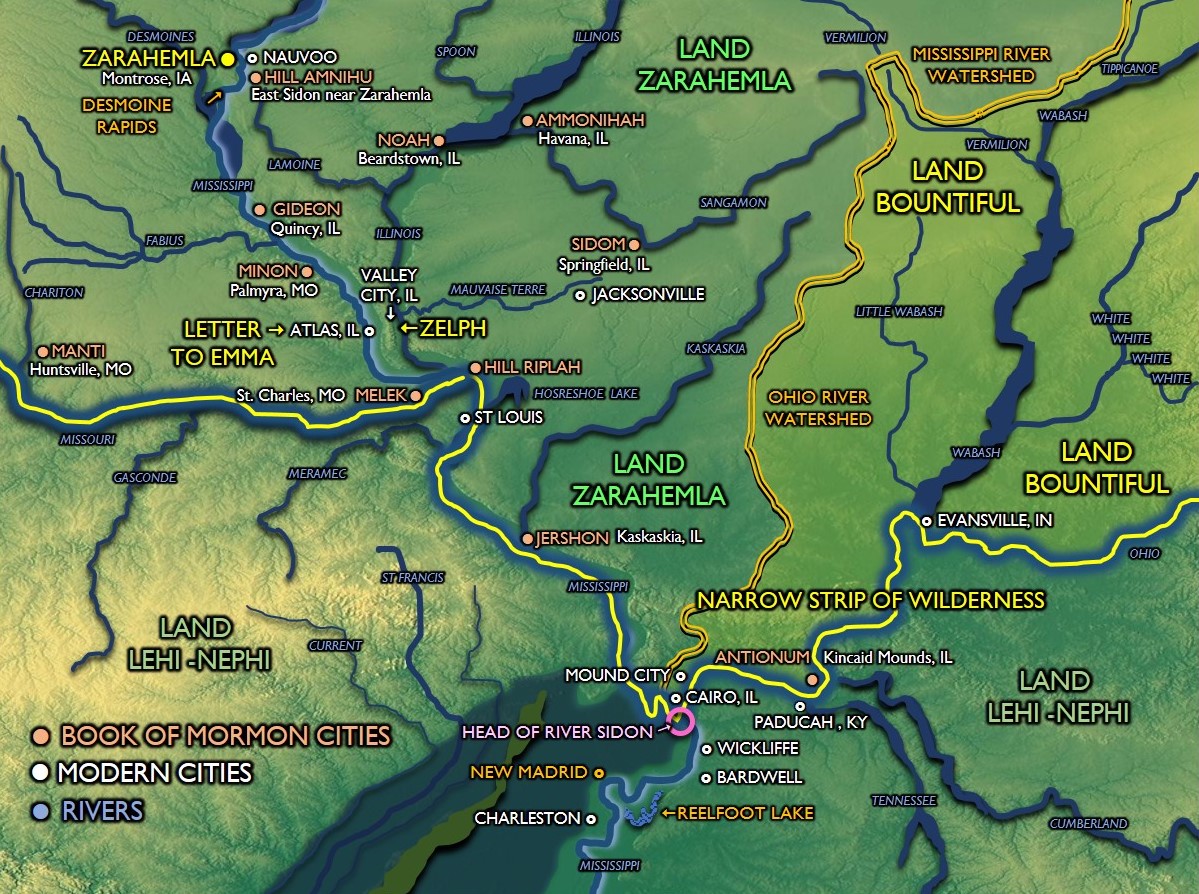
He was a white Lamanite, for the curse was partially taken from him. He fought for the Nephites in one of the last and great battles with the Lamanites. He was very tall, many say over 7-9 feet in length, as they saw his complete skeleton. Joseph saw a large spear head found between his ribs that killed him.
This is a very strong opinion isn’t it? Well, there were over 7 witnesses that saw Zelph including, Wilford Woodruff, Georg A. Smith, Moses Martin, Reuben McBride, Heber C. Kimball, Levi Hancock, Brigham Young, and more during Zions camp on June 2, 1834 on the west side of the Illinois River at the top of a mound over 60 feet high.
Why is this very accurate commentary ignored by intellectuals and historians, who claim the story was not a revelation and there are to many differing stories from each of these men in regard to various details? They aren’t all lying assuredly.
Let’s just say, these scholars WANT to be disagreeable in my opinion. It puts a huge hole in their Mesoamerican theory. They say, “Well if this was true it would be canonized” or Joseph wasn’t speaking revelation”, or that single incident is not worthy of even considering.” These scholars are wrong. This single event along with a letter to Emma that Joseph wrote to Emma just two days later, are indeed strong evidence that Joseph knew the Nephites lived in North America, right there near the Illinois River by a small town called Valley City, Illinois.
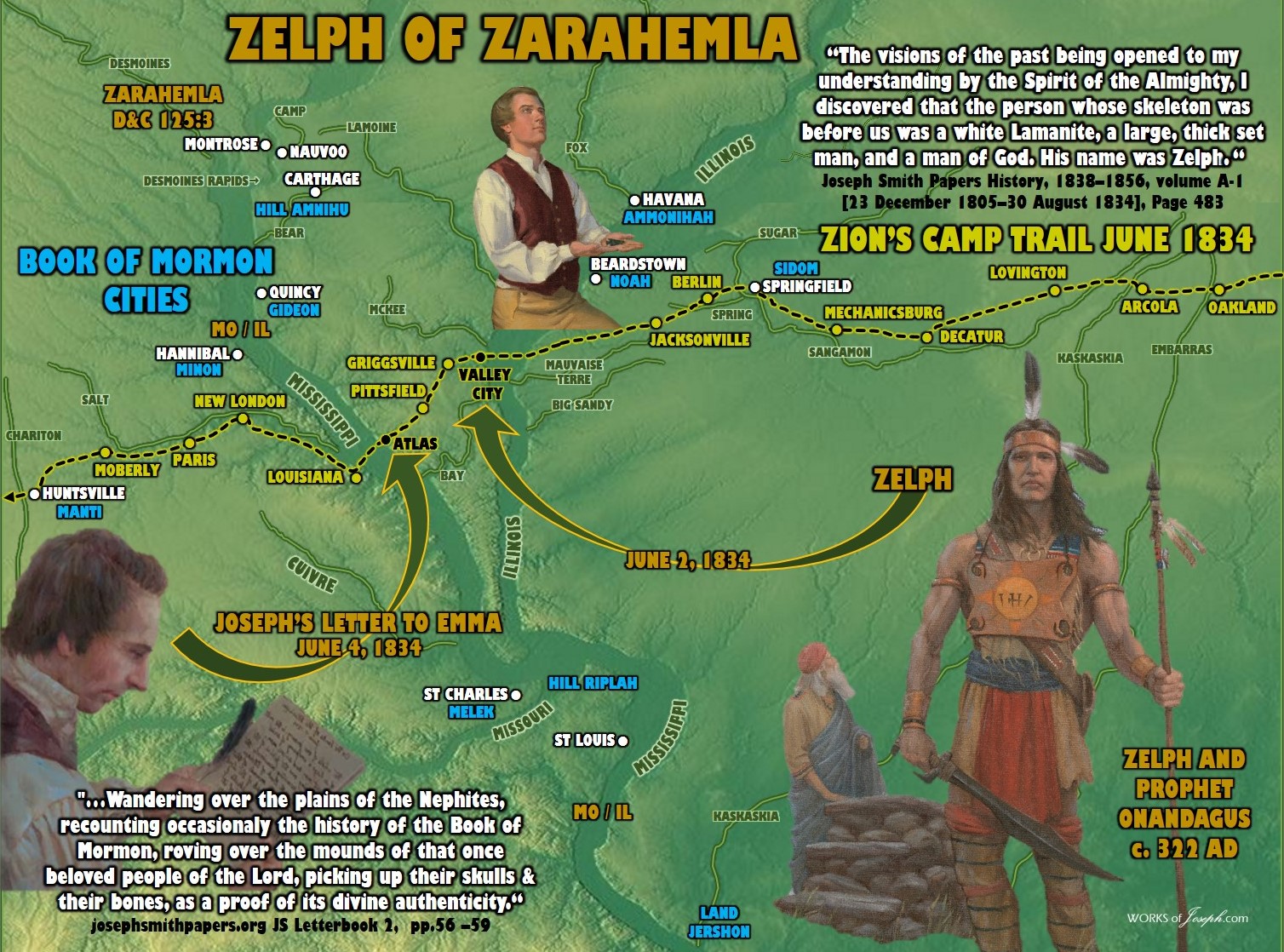
Here is part of what Joseph said to Emma, just 30 miles west of Zelph’s grave, in a place called Atlas, Illinois on the Mississippi River. “The whole of our journey, in the midst of so large a company of social honest and sincere men, wandering over the plains of the Nephites, recounting occasionally the history of the Book of Mormon, roving over the mounds of that once beloved people of the Lord, picking up their skulls & their bones, as a proof of its divine authenticity… During our travels we visited several of the mounds which had been thrown up by the ancient inhabitants of this country-Nephites, Lamanites, etc.” Joseph Smith Papers Letter to Emma Smith, 4 June 1834 Page 56, and here is the link in the Joseph Smith Papers about the Zelph Story.
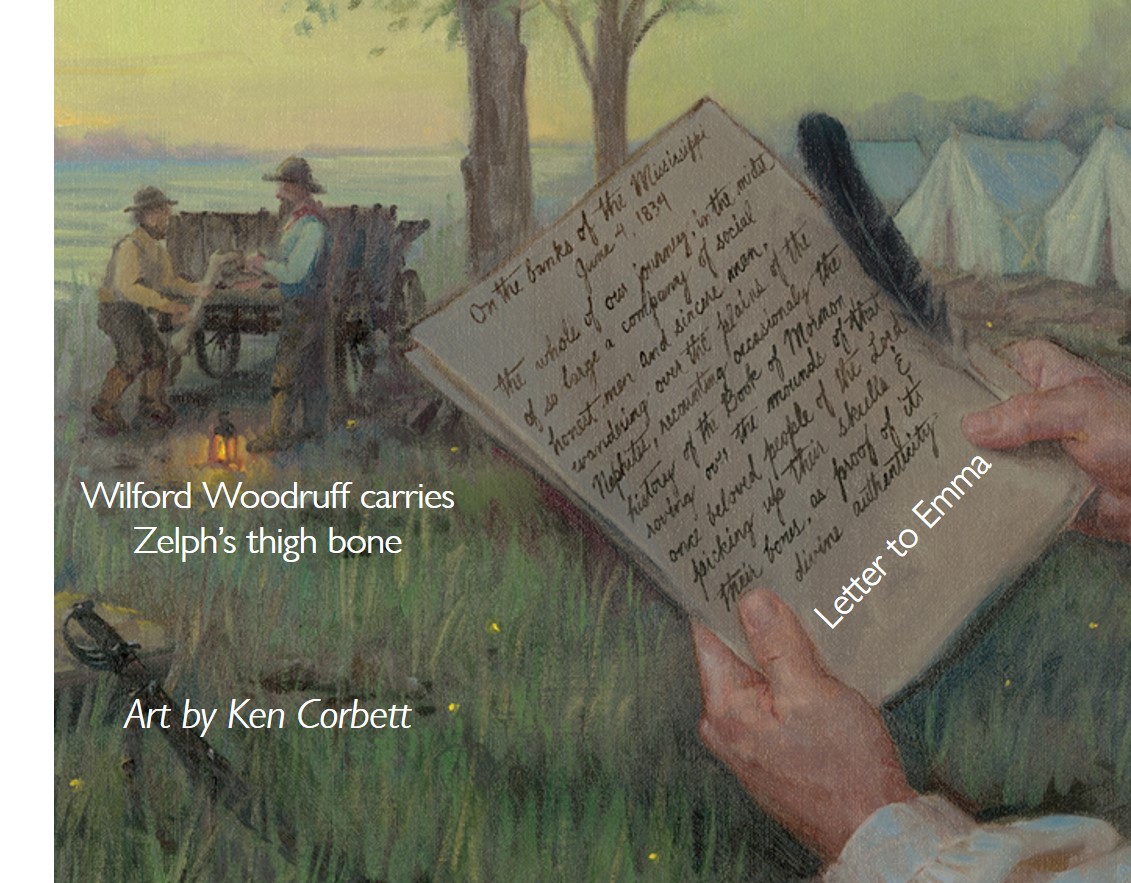
So where is Zelph’s thigh bone today? Our great friend Wayne May has studied this for years now. He has a very good idea where to find it. Wayne has much more information than I am sharing with you here and in a few months he may begin an organized search for this relic.
Why is Zelph important and what does it do for questions about the Book of Mormon geography? Many intellectuals just dismiss the story as a unique talk about some man named Zelph who isn’t even mentioned in the Book of Mormon. He also had a prophet leader named Onondagus who was known from the Rocky Mountains to the Hill Cumorah. We know this because Joseph Smith had “the heavens opened to him” as the information is here in the Joseph Smith Papers here.

In today’s archaeological record a Hopewell culture mound site is located in Pike County, Illinois three miles east of the city of Griggsville. The mound today is known as Naples-Russell Mound #8, or Zelph Mound. Dated 62 AD to 128 AD. Thomas E. Emerson, PhD. Principal Investigator, Survey Director, and State of Illinois Archaeologist. GPS 39.693399, -90.648772
This being an archaeological fact and adding Joseph Smith’s witness would naturally give the honest person a testament that this story is most likely true. Joseph said this man was a righteous Lamanite who fought with the Nephites in a great last struggle with the Nephites. It’s truth for me.
Just a day or two after speaking of Zelph, Joseph Smith wrote a letter to his wife Emma which also validates the Book of Mormon events happened near the Mississippi River. Joseph Smith Papers here.

“During our travels we visited many mounds thrown up by the ancient inhabitants, the Nephites and Lamanites. This morning, June 3rd, we went on to a high mound near the river. From the summit we could overlook the tops of the trees as far as we could see. The scenery was truly beautiful. On the summit of the mound were stones which presented the appearance of three altars, they having been erected, one above the other, according to the ancient order of things. Human bones were seen upon the ground. Brother Joseph requested us to dig into the mound ; we did so ; and in about one foot we came to the skeleton of a man, almost entire, with an arrow sticking in his backbone. Elder Milton Holmes picked it out, and brought it into the Camp, with one of the leg bones, which had been broken. I brought the thigh bone to Missouri. I desired to bury it in the Temple Block in Jackson County; but not having this privilege,
I buried it in Clay County, Missouri, near the house owned by Col. Arthur and occupied by Lyman Wight.” The arrowhead referred to is now in the possession of President Joseph F. Smith, Salt Lake City, Utah. History of the Life and Labors of Wilford Woodruff. AS RECORDED IN HIS DAILY JOURNALS PREPARED FOR PUBLICATION BY MATTHIAS COWLEY THE DESERET NEWS Salt Lake City, Utah 1909 page 41
“Brother Joseph,” continues Wilford, “feeling anxious to learn something of this man, asked the Lord, and received an open vision. The man’s name was Zelph. He was a white Lamanite, the curse having been removed because of his righteousness. He was a great warrior, and fought for the Nephites under the direction of the Prophet Onandagus. The latter had charge of the Nephite armies from the Eastern sea to the Rocky Mountains. Although the Book of Mormon does not mention Onandagus, he was a great warrior, leader, general, and prophet. Zelph had his thigh bone broken by a stone thrown from a sling, but was killed by the arrow found sticking in his backbone. There was a great slaughter at that time. The bodies were heaped upon the earth, and buried in the mound, which is nearly three hundred feet in height.” History of the Life and Labors of Wilford Woodruff. AS RECORDED IN HIS DAILY JOURNALS PREPARED FOR PUBLICATION MATTHIAS COWLEY THE DESERET NEWS Salt Lake City, Utah 1909 page 41
“Elder [Wilford] Woodruff carried the thigh bone to Clay county” Joseph Smith Papers History, 1838–1856, volume A-1 [23 December 1805–30 August 1834] page 483

According to Wilford Woodruff, “I brought the thigh bone to Missouri. I desired to bury it in the Temple Block in Jackson County; but not having this privilege, I buried it in Clay County, Missouri, near the house owned by Col. Arthur and occupied by Lyman Wight. The arrowhead referred to is now in the possession of President Joseph F. Smith, Salt Lake City, Utah.” Wilford Woodruff Journal Page 41. According to Wayne May, “Zelph’s thighbone is on private property near the 3 witnesses marker here” >Click GPS Here
Thanks to Wayne May for much of the Following Information




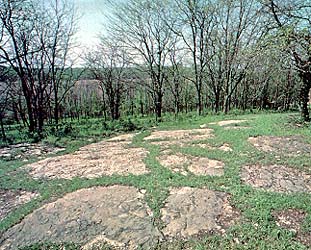


The Way It Looks Today:
A Camera Tour of Church History Sites in Missouri; Click Link Below.
Lyman Wight
A son of Levi Wight and Sarah Corbon, was born in the township of Fairfield, Herkimer County, New York, May 9th, 1796. He served the Republic in the war of 1812–15 with Great Britain.
He united with Isaac Morley and others in forming a society in Kirtland, Ohio, conducted on the common stock principle, being one phase in the rise and progress of the Campbellite Church.
He was baptized into the Church of Jesus Christ of Latter-day Saints by Oliver Cowdery in 1830, and was soon afterwards ordained to the office of an Elder. He was ordained to the office of a High Priest by Joseph Smith, at the June conference in Kirtland, 1831. While at that conference he testified he had a vision and saw the Savior. He went to Missouri in 1831, by revelation, and soon after went to Cincinnati on a mission to preach the Gospel. On arriving in that city he called at a hotel and engaged his board for several weeks. The landlord asked him if he was a merchant. He said, ‘‘No.” He asked him what his business was. He replied he was a preacher of the Gospel. He asked him what order he belonged to. He answered, he was after the order of Melchisedek. He created so much curiosity that they wished to hear him preach. He told them that was his business, and if they would open the court house he would do so willingly.
They obtained the house, and he delivered a series of lectures and built up a branch of the Church, and baptized upwards of one hundred. The family of Higbees were among the first baptized ; they were fishermen, and Wight would fish with them through the day and preach at night. One evening he went from the fish net to the court house, and stood on the top of a stove barefooted with his trowsers rolled up to his knees, and his shirt sleeves up to his elbows, and preached two hours. Some of the people remarked, “He preaches the truth, though he does not look much like a preacher.” Many that he baptized went to Jackson County, Missouri, and were with him through the persecutions of 1833. During that persecution he was a dread to his enemies and a terror to evil doers, and his life was often sought after. He commanded the brethren in Jackson County in their defense against the mob. In one instance he was chased by seven men about six miles; they were fully armed and came upon him so suddenly that he had to mount his horse with a blind bridle, without any saddle or arms, except a pocket knife. His horse being fleet, he escaped by out-running them and leaping a deep wide ditch, where none of his pursuers dared to follow. On the 23rd of July, 1833, he signed an agreement with others that the Saints would leave Jackson County before the first day of January, 1834; but before that time they were all driven out. After the Saints were driven out of Jackson County into Clay County, volunteers were called for to go and visit the Prophet in Kirtland. Several of the Elders were asked by Bishop Partridge if they could go ; but they made excuses.
Lyman Wight then stepped forward, and said he could go as well as not. The Bishop asked him what situation his family was in. He replied, his wife lay by the side of a log in the woods, with a child three days old, and he had three days’ provision on hand; so he thought he could go very well. P. P. Pratt next volunteered, and they went together to Kirtland in February, 1834. On their arrival at Kirtland, the Prophet obtained the word of the Lord, and they were commanded to gather up the strength of the Lord’s house to go up to Zion, and it was the will of the Lord that there should be five hundred men, but not to go up short of one hundred. In fulfilment of this commandment, Lyman Wight went through Pennsylvania, and on the 15th day of March, he attended a conference at Avon, New York; he also went through Michigan, northern Indiana and Illinois, and assisted Hyrum Smith in gathering up a company of eighteen, who joined Zion’s Camp at Salt River, Missouri, June the 8th, where the camp was re-organized, and Lyman Wight was appointed the second officer. He walked the whole journey from Michigan to Clay County without stockings on his feet. By the appointment of Joseph Smith he gave a written discharge to each member of the camp when they were dismissed. On July 3rd he was ordained one of the High Council of Missouri.
He was one of the signers of an appeal to the world, making a proclamation of peace in Missouri, July, 1834, and spent the summer of 1834 in Clay County, Missouri. He took a job of making 100,000 bricks, and building a large brick-house for Col. Michael Arthur in Clay County; Wilford Woodruff, Milton Holmes, Heman T. Hyde and Stephen and Benjamin Winchester labored for him through the season. Being counseled to go to Kirtland and get his endowment, Elder Wight started in the fall of 1835, and preached his way through to Kirtland, baptizing such as would receive his testimony. While on the journey he called at the city of Richmond, Indiana, and gave out an appointment to preach in the court house. He walked through the city, and, being a stranger, was unknown ; but wherever he went the people were blackguarding the Mormons, and many declared they would tar and feather the preacher when he came to meeting that night. At the time of appointment Elder Wight was at his post. There being no light provided, he went and bought candles and lighted the room. The house was soon filled with men who brought tar and feathers for the Mormon Elder. He preached about two hours, reproving them most severely for their meanness, wickedness and mobocratic spirit. At the close of the meeting he said, “If there is a gentleman in this congregation, I wish he would invite me to stay with him over night,” whereupon a gentleman stepped forward and tendered him an invitation, which he willingly accepted. His host said, “Mr. Wight, it is astonishing how you have become so well acquainted with the people here, for you have described them very correctly.” He was kindly entertained and furnished with money in the morning to aid him on his journey. He spent the winter of 1835–36 in Kirtland, and received his endowment.
He returned to Missouri in 1836. David W. Patten having preferred a charge against Elder Wight for teaching false doctrine; he was tried before the High Council at Far West, April 24, 1837. It was decided that he did teach false doctrine. He made the required acknowledgments. He opposed the selling of land in Jackson County, Mo., and considered W. W. Phelps and John Whitmer in transgression for selling theirs. On June 28, 1838, he was chosen and ordained second Counselor to John Smith, President of the Stake at Adam-ondi-Ahman, by Joseph Smith. Sheriff Morgan, of Daviess Co., had agitated the people of the surrounding counties, by asserting that he had writs against Joseph Smith and Lyman Wight, which he could not serve without endangering his life. He invited the people to assemble together in Daviess County, with their arms, so that he could summon them as a posse comitatus to make the arrest. The real design was to murder Joseph Smith and Lyman Wight, as they had not offered any resistance, neither had the Sheriff.
When the Church removed to the Rocky Mountains, Lyman Wight and Geo. Miller, who both rebelled against the authority of President Young, went to Texas with a small company of Saints, and settled a little south of the present site of Austin. Wight and Miller subsequently dissolved partnership, and Miller returned 130 miles north with a part of the company. At a meeting held in the G. S. L. City fort, Dec. 3, 1848, fellowship was withdrawn from both Wight and Miller. Wight remained in Texas until his death, which occurred on March 31, 1858, in Mountain Valley. He died very suddenly of epileptic fits, having been sick only five hours. The company of Saints who went with him and Miller to Texas had been scattered to the four winds. Some of them, however, were subsequently received into the Church by rebaptism. The Historical Record, Volumes 5-6 page 109-110
Michael Arthur Farm, Clay County, Missouri
Though not well known, the site of the Michael Arthur farm in Clay County, Missouri is one of significance to students of Latter-day Saint history. Michael Arthur was not a member of the Church, but was friendly to the Latter-day Saints during a period of great opposition and animosity toward the Mormons. At that time, such an individual was referred to as a Jack Mormon.
According to Max H. Parkin, it was on the Michael Arthur farm that the following events occurred: Mr. Arthur assisted a number of the displaced Saints; he hired members of the Church, including Lyman Wight and Wilford Woodruff, to build a two-story home for him; the Prophet Joseph Smith spent time and preached there; on July 3, 1834, the members of Zion’s Camp were formally discharged there; and the second stake of the Church was organized there. A cemetery adjacent to the farm property has been purchased and a monument to the Eight Witnesses of the Book of Mormon has been erected.

Map & Directions
The site of the Michael Arthur farm is located in Clay County, Missouri about four miles from the Liberty Jail. From the town square,, take Mill Street west to Thornton and turn left (southwest). After crossing highway 291, Thornton will become Withers Road. Follow Withers southbound until there is a forced right turn (west) on S. Liberty Parkway. Soon after, there will be the first cross street named Campbell Dr. Turn left, (south) on Campbell. While on Campbell, there will be a small parking lot on the right side of the road. That is for the Monument to the Eight Witnesses which is located on what was once the cemetery on the Michael Arthur farm. If you continue on Campbell, you will see a house on the right just before the road turns to the right. This area was once the Michael Arthur farm. The gps coordinates are: 39°12’25.7″N 94°26’58.7″W
Ownership Status
The property that was once the Michael Arthur farm is privately owned and the privacy of the owners should be respected. The one exception is the Monument to the Eight Witnesses. That property has been purchased by Latter-day Saints and is open to visitors.
Photos
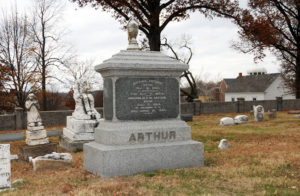
Sources
Kenneth R. Mays, “On the Road with Zion’s Camp: A Photographic Essay of the 1834 Missouri Expedition,” in Mormon Historical Studies, Spring/Fall 2007, vol. 8, nos.1-2, 72-75.
Max H Parkin, in LaMar C. Berrett, ed., Sacred Places, vol. 4, 171-173, 176, 215-216.
Joseph Smith, History of the Church, 2:122-123.
Josiah Curtis
https://www.findagrave.com/memorial/6014167/josiah-curtis
| BIRTH | 5 Aug 1830Chautauqua County, New York, USA |
|---|---|
| DEATH | 28 Dec 1910 (aged 80)Independence, Jackson County, Missouri, USA |
| BURIAL | Mound Grove CemeteryIndependence, Jackson County, Missouri, USA |
| MEMORIAL ID | 6014167 · View Sourc |
Religious Leader. Joined the Mormon Church in western New York. Baptized as a Latter Day Saint at Far West Missouri in 1838, and was arrested by the Carthage, Illinois mob shortly before Joseph Smith was killed (he was released to deliver a letter to Emma Smith). Served in Mormon Battalion Company A-Pueblo Detachment from 1846 to 1847, enlisting at age 15. He helped build the first public building in Salt Lake City, and received a Utah Pioneer Gold Medal from the state of Utah in 1897. He was a staunch defender of the Book of Mormon his entire life. The Zion’s Camp monument to Joseph Smith is located about 30 feet from Josiah Curtis’ grave.
The Eight Witnesses Monument
Posted on by DL Barrett
History
Located about 3 miles south of Liberty , Missouri, the Eight Witness Monument recognizes the handful of individuals who saw ‘the gold plates’ first hand and recorded their testimony in the preface of The Book of Mormon.
The surrounding land also bears significance as it once belonged to Michael Arthur who was a great friend and sympathizer to many members of the Church of Jesus Christ of Latter-day Saints. As these Latter-day Saints were expelled from Jackson, Missouri Arthur opened much of his 169 acres of land for work and refuge.
The granite monument sits near the graves of Christian and Peter Whitmer, two of the Eight Witnesses, who died during the period of time that they worked on Arthur’s land. Several of the other witnesses are buried in the general nearby region including places such as Richmond, Kingston, and Excelsior Springs.
Michael Arthur Grave
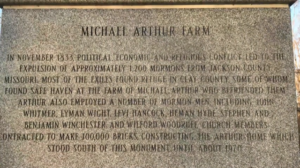
Present
The Monument sits in a quite area surrounded by woodland. This is not a oft visited historical site however since its dedication in 2011 has been nicly taken are of by the Church of Jesus Christ.
The granite that composes this monument was quarried from the same deposit that was used to construct the Three Witnesses Monument as well as the Joseph Smith Memorial over a century ago.
In addition to remembering the testimony of the ‘Eight Witnesses’ this monument also commemorates the dischargin of Zion’s Camp and the calling of early Church leaders in Missouri
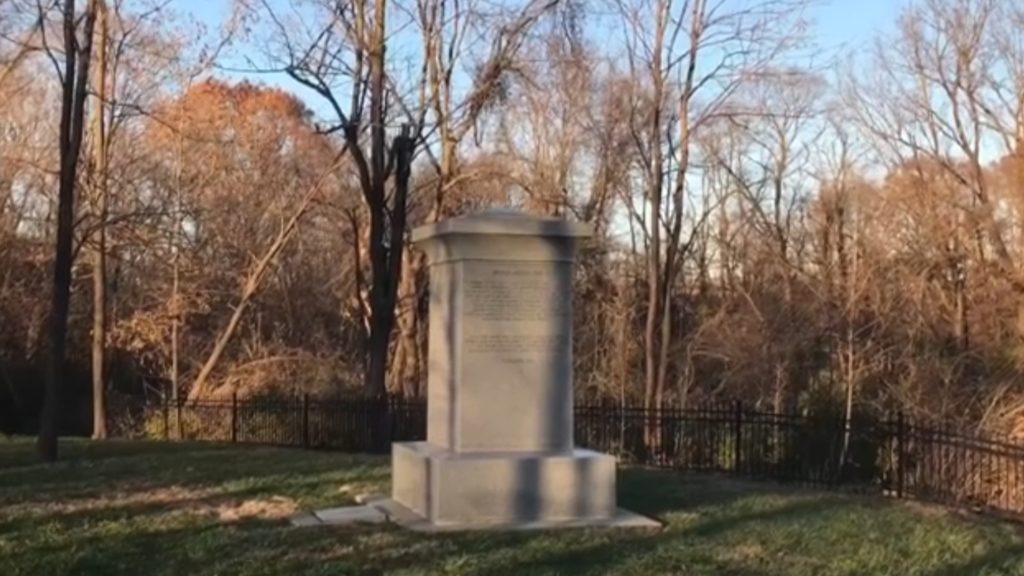


[Regarding “Tower Hill” north of Far West, Missouri] We pursued our source up the river, mostly through timber, for about eighteen miles, when we arrived at Colonel Lyman Wight’s home. He lives at the foot of Tower Hill (a name I gave the place in consequence of the remains of an old Nephite altar or tower that stood there), where we camped for the Sabbath.
George W. Robinson, a scribe of Joseph Smith who was with him at the time, writes: “We next kept [traveling] up the river mostly in the timber for ten miles, until we came to Colonel Lyman Wright’s who lives at the foot of Tower Hill. A name appropriated by President Smith in consequence of the remains of an old Nephitish Altar and Tower where we camped for the Sabbath. (Scott H. Faulring ed., An American Prophet’s Record: The Diaries and Journals of Joseph Smith, SLC: Signature Books, 1989, p. 184.) 1838 Joseph Smith, Jr. History of the Church of Jesus Christ of Latter-day Saints, 3:34-35 Quoted in Step by Step through the Book of Mormon by Alan C. Miner

